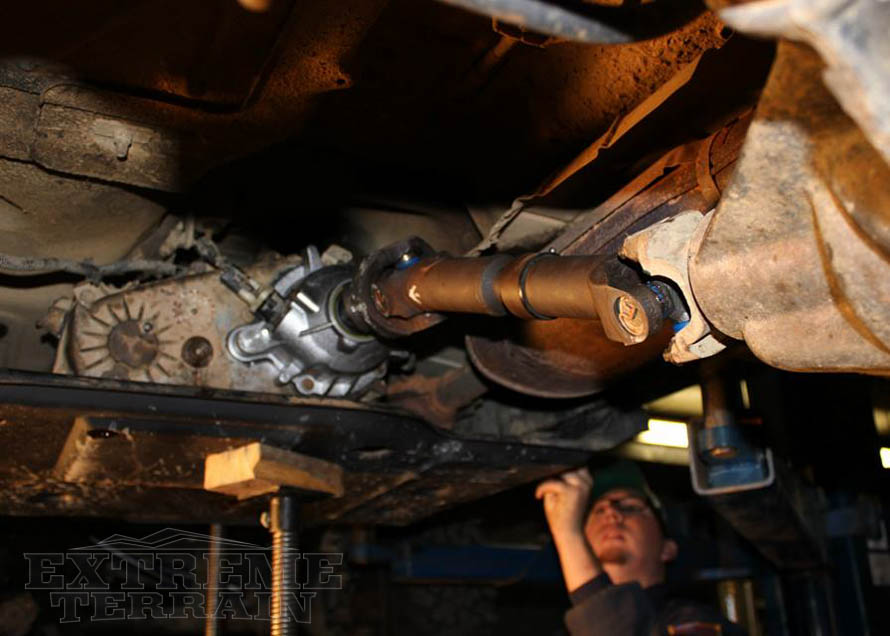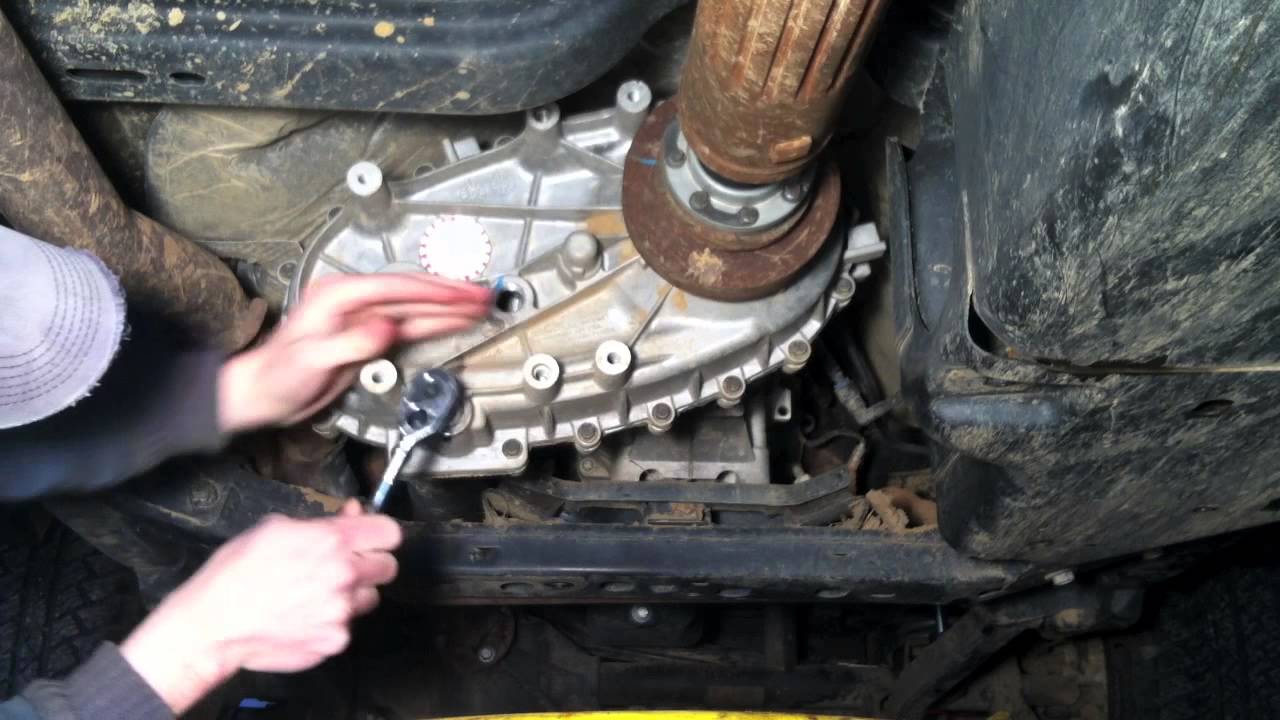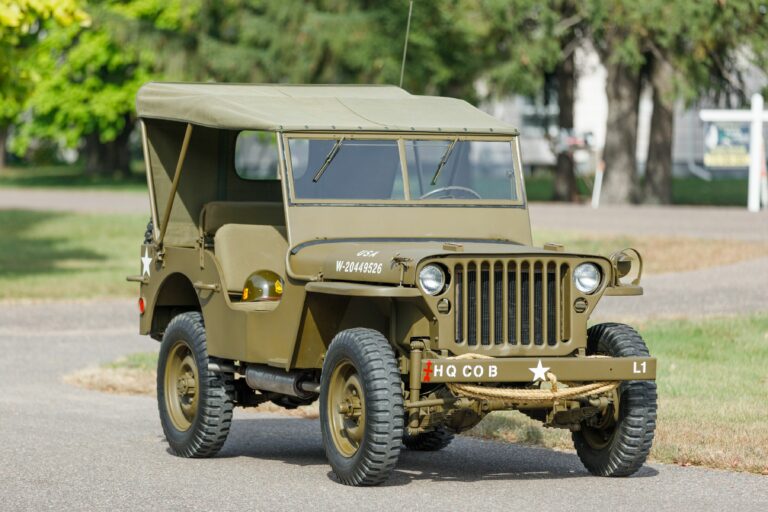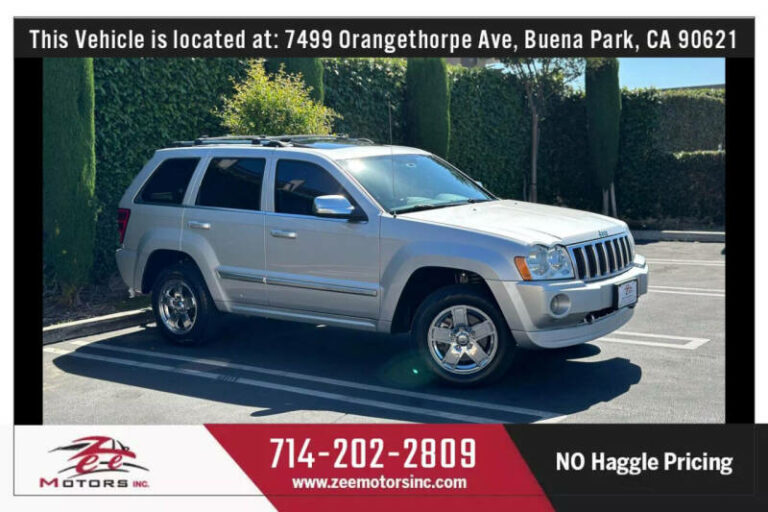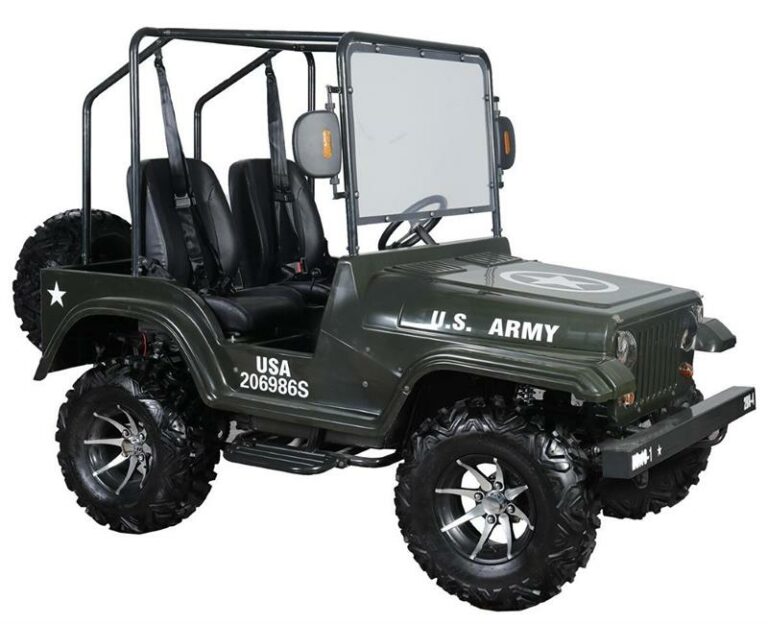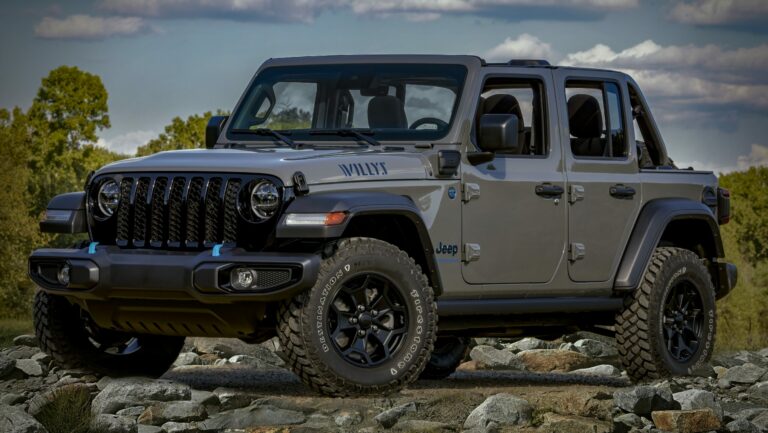Jeep Transfer Case For Sale: Your Ultimate Guide to Restoring and Enhancing 4×4 Capability
Jeep Transfer Case For Sale: Your Ultimate Guide to Restoring and Enhancing 4×4 Capability /jeeps.truckstrend.com
The iconic Jeep, synonymous with rugged adventure and unparalleled off-road prowess, owes much of its legendary capability to a crucial, often unsung component: the transfer case. This robust gearbox is the heart of a Jeep’s four-wheel-drive system, allowing power to be distributed to both front and rear axles and providing the various driving modes essential for tackling diverse terrains. If you’re searching for a "Jeep transfer case for sale," whether due to a failure, a desire for an upgrade, or a new build project, understanding this vital component is key to making an informed and successful purchase.
This comprehensive guide will navigate you through everything you need to know about Jeep transfer cases, from understanding their function and identifying common issues to exploring buying options, installation considerations, and ensuring you get the right unit for your specific needs.
Jeep Transfer Case For Sale: Your Ultimate Guide to Restoring and Enhancing 4×4 Capability
Understanding the Jeep Transfer Case: The Heart of 4×4 Capability
At its core, a Jeep transfer case is a supplementary gearbox that sits between the transmission and the driveshafts, allowing the driver to select different drive modes. It essentially takes the power output from the transmission and splits it, sending it to the front and/or rear drive shafts, which then connect to the axles.
Most Jeep transfer cases offer several key modes:
- 2H (Two-Wheel Drive High): Power is sent only to the rear wheels, ideal for everyday driving on paved roads, offering better fuel economy and reduced drivetrain wear.
- 4H (Four-Wheel Drive High): Power is distributed to both front and rear wheels, suitable for light off-roading, snow, or slippery conditions at higher speeds.
- 4L (Four-Wheel Drive Low): Engages a lower gear ratio within the transfer case, multiplying torque for maximum pulling power and control at very low speeds, essential for rock crawling, steep climbs, or navigating challenging obstacles.
- N (Neutral): Disconnects the drivetrain, allowing the vehicle to be flat-towed without damaging the transmission or transfer case.

Some advanced transfer cases, like the NP242 (Selec-Trac), also offer a 4WD Full-Time mode, which allows for use on paved roads by incorporating a differential that accommodates speed differences between the front and rear axles. Understanding these modes and their applications is fundamental when considering a transfer case for your Jeep.
Why Are You Looking for a Jeep Transfer Case For Sale? Common Scenarios
People search for "Jeep transfer case for sale" for a variety of reasons, each dictating a different approach to the purchase:
- Replacement Due to Failure: This is the most common reason. Over time, or due to aggressive use, transfer cases can develop issues. Common signs of failure include grinding noises, clunking, difficulty shifting between modes, fluid leaks, or complete loss of power to one or both axles. Worn gears, stretched chains, bad bearings, or a cracked housing are typical culprits.
- Upgrade for Performance: Many Jeep enthusiasts seek to enhance their vehicle’s off-road capability. This might involve swapping a stock transfer case for one with a lower low-range gear ratio (e.g., 4:1 instead of 2.72:1) for improved crawling, or a stronger unit to handle more powerful engines and larger tires. Aftermarket options like the Atlas transfer cases are popular for this purpose.
- Vehicle Restoration or Custom Build: For those building a custom rig from the ground up, restoring a classic Jeep, or performing an engine/transmission swap, sourcing a compatible transfer case is a critical step in the drivetrain assembly.
- Damage from Extreme Use: While Jeeps are built tough, extreme off-roading, hard impacts, or improper use of 4WD can lead to damage requiring a replacement.


Identifying your specific need will help narrow down the options and determine whether a new, remanufactured, or used unit is the best fit.
Types of Jeep Transfer Cases: A Buyer’s Guide
When exploring "Jeep transfer case for sale" options, you’ll encounter different types based on their condition, origin, and specific model.
By Condition:
- New Transfer Cases: These are brand-new units from the OEM (Original Equipment Manufacturer) or reputable aftermarket manufacturers.
- Pros: Factory fresh, come with a warranty, no wear and tear, latest design improvements.
- Cons: Highest cost.
- Remanufactured/Rebuilt Transfer Cases: These are used transfer cases that have been professionally disassembled, cleaned, inspected, and rebuilt with new internal components (bearings, seals, chains, gears as needed) to meet or exceed OEM specifications.
- Pros: More cost-effective than new, often come with a warranty (1-3 years is common), thoroughly tested for quality.
- Cons: Not brand new, may require a core charge (returning your old unit).
- Used Transfer Cases: These are pulled from donor vehicles, salvage yards, or sold by private parties.
- Pros: Lowest initial cost, good for budget builds or if you need specific rare parts.
- Cons: Unknown history, no warranty, potential for hidden internal damage, "as-is" sale. Requires careful inspection.
Popular Jeep Transfer Case Models:
Jeep has used various transfer cases over the decades. Knowing your specific Jeep model and year is crucial, as compatibility varies greatly.
- NP231 (New Process 231) / NV231 (New Venture 231) Command-Trac:
- Commonly Found In: Jeep Cherokee (XJ), Wrangler (YJ, TJ), Comanche (MJ).
- Characteristics: Part-time 4WD (2H, 4H, N, 4L), chain-driven, aluminum housing, very popular for its reliability and aftermarket support. Has a 2.72:1 low range ratio.
- NP242 (New Process 242) / NV242 Selec-Trac:
- Commonly Found In: Jeep Cherokee (XJ), Grand Cherokee (ZJ, WJ), Comanche (MJ).
- Characteristics: Adds a "Full-Time 4WD" option (2H, 4 Part-Time, 4 Full-Time, N, 4L), allowing for safe use on pavement. Chain-driven, versatile.
- NV241OR (New Venture 241 Off-Road) Rock-Trac:
- Commonly Found In: Jeep Wrangler Rubicon (TJ, JK, JL).
- Characteristics: Heavy-duty, part-time 4WD, features a very low 4:1 low-range gear ratio for extreme rock crawling. Stronger components.
- Dana 18, Dana 20, NP207, NP208: Found in older CJ models and full-size Jeeps. These are typically gear-driven and very robust, but parts can be harder to find.
- Aftermarket Options (e.g., Atlas Transfer Cases – Atlas II, Atlas 4SP):
- Characteristics: High-performance, twin-stick capable, multiple low-range ratio options (e.g., 2.72:1, 3.8:1, 4.3:1, 5.0:1), incredibly strong, designed for extreme off-roading.
- Pros: Unmatched strength, customizability.
- Cons: Very expensive, typically require custom driveshafts and modifications.
Key Factors to Consider When Buying a Jeep Transfer Case
Before you jump on the first "Jeep transfer case for sale" listing, consider these critical factors to ensure compatibility and satisfaction:
- Vehicle Compatibility (Year, Make, Model, Engine, Transmission): This is paramount. The transfer case must bolt directly to your specific transmission. Input shaft spline count and length, as well as bolt patterns, vary significantly. Always verify compatibility using your Jeep’s VIN or precise year, make, model, engine, and transmission type (manual vs. automatic).
- Input Shaft and Spline Count: The number of splines on the transfer case input shaft must match the output shaft of your transmission. Common counts are 21, 23, or 27 splines. Manual and automatic transmissions often have different spline counts.
- Output Yokes/Driveshafts: Ensure the output yokes (front and rear) match your existing driveshafts. Many Jeeps, especially lifted ones, benefit from a Slip Yoke Eliminator (SYE) kit on the rear output, which replaces the slip yoke with a fixed yoke and allows for a longer driveshaft, reducing driveline vibrations. If the transfer case you’re buying doesn’t have an SYE and you need one, factor that into the cost.
- Gear Ratios: Most stock transfer cases have a 2.72:1 low-range ratio. If you’re upgrading for rock crawling, you might seek a 4:1 ratio (like the NV241OR found in Rubicons) or an aftermarket Atlas unit.
- Condition and Warranty: For remanufactured units, inquire about the rebuilder’s process and the warranty duration. For used units, ask for detailed photos, videos of it running (if possible), and inquire about its mileage and the donor vehicle’s history. A professional inspection is highly recommended for used units.
- Reputation of the Seller/Rebuilder: Buy from reputable sources. Check reviews, ask for references, and ensure they have a good track record in the Jeep community.
- Budget: New units are the most expensive, followed by remanufactured, and then used. Factor in shipping costs (transfer cases are heavy!) and potential installation costs if you’re not doing it yourself.
Where to Find Jeep Transfer Cases For Sale
A wide array of sources exist for finding a "Jeep transfer case for sale":
- Specialized Online Retailers: Companies like Quadratec, 4WheelParts, Summit Racing, and JEGS stock new and sometimes remanufactured transfer cases. They often have detailed compatibility charts.
- Remanufacturers/Rebuilders: Businesses specializing in rebuilding transmissions and transfer cases (e.g., Jasper Engines & Transmissions, or smaller local shops) offer quality units with warranties.
- Salvage Yards/Junkyards: A good source for used parts. You might find a good deal, but buyer beware regarding condition. Always inspect thoroughly.
- Online Marketplaces: eBay, Craigslist, and Facebook Marketplace can have good deals from private sellers. Exercise caution and try to inspect the unit in person if possible.
- Jeep Forums and Enthusiast Groups: Online communities are excellent for finding parts, getting advice, and sometimes even local sales from fellow enthusiasts.
Installation Considerations and Tips
Installing a transfer case can range from a moderately challenging DIY project to a task best left to professionals, depending on your mechanical skill level and the tools available.
- Professional vs. DIY: If you’re unsure, or don’t have proper tools (transmission jack, specialized sockets), professional installation is recommended.
- Tools and Equipment: A transmission jack is almost essential for safely removing and installing a heavy transfer case. You’ll also need a good set of wrenches, sockets, and possibly a torque wrench.
- Fluid Type and Fill: Always use the correct fluid specified by Jeep for your transfer case (e.g., ATF+4 for most NP/NV units, or gear oil for older Dana units). Do not overfill or underfill.
- Driveshaft Compatibility: After installation, check driveshaft angles, especially if you’ve changed the transfer case type or installed an SYE. You may need custom-length driveshafts.
- Shift Linkage: Ensure the shift linkage is properly adjusted for smooth engagement of all modes.
- Post-Installation Testing: After installation, slowly test all transfer case modes in a safe area (e.g., a dirt road or open field) before hitting the trails or regular roads. Listen for unusual noises and check for leaks.
Common Challenges and Solutions
- Finding the Right Part: With so many variations, ensuring compatibility can be tricky.
- Solution: Always cross-reference part numbers, use your VIN, and consult official Jeep service manuals or reputable online parts diagrams. When in doubt, call the seller or a Jeep parts specialist.
- Hidden Damage in Used Units: Used units might look fine externally but have internal issues.
- Solution: If buying used, try to inspect it in person. Look for fresh fluid, check for excessive play in the input/output shafts, and ask for proof of functionality from the donor vehicle if possible. Consider a pressure test or a teardown if you’re comfortable.
- Shipping Costs/Logistics: Transfer cases are heavy, leading to high shipping fees.
- Solution: Factor shipping into your budget. Look for local sellers to save on shipping, or consider freight shipping for larger distances.
- Core Charges: Remanufactured units often require a core charge, which is refunded when you return your old, rebuildable transfer case.
- Solution: Be aware of core charges and factor them into your initial cost. Ensure your old unit is in rebuildable condition to get your refund.
Estimated Price Range for Jeep Transfer Cases
Please note that these prices are estimates and can vary significantly based on condition, model, seller, and market demand. Always get a specific quote for your needs.
| Transfer Case Type & Condition | Common Jeep Models | Estimated Price Range (USD) | Notes |
|---|---|---|---|
| New OEM | NP231, NP242 | $1,500 – $2,500+ | Factory new, full warranty. |
| New Aftermarket | NP231, NP242 | $1,200 – $2,000+ | From reputable aftermarket brands. |
| Remanufactured/Rebuilt | NP231, NP242 | $800 – $1,500+ | Often includes core charge; typically 1-3 year warranty. |
| Used (from Salvage/Private) | NP231, NP242 | $250 – $700 | Varies greatly by condition, mileage, and seller; often no warranty. |
| New OEM (Rubicon) | NV241OR | $2,500 – $4,000+ | Heavy-duty, 4:1 low range. |
| Remanufactured (Rubicon) | NV241OR | $1,800 – $3,000+ | Specialized unit, higher demand. |
| Aftermarket High-Perf. | Atlas II, Atlas 4SP | $2,800 – $5,000+ | Custom built, multiple ratios, extreme duty. |
| Used (Older Models) | Dana 18, 20, NP207 | $150 – $600 | Parts can be scarce; often require rebuild. |
Prices do not include shipping, installation, or potential core charges.
Frequently Asked Questions (FAQ)
Q1: How do I know if my transfer case is bad?
A1: Common signs include grinding, clunking, or whining noises, difficulty shifting between 2WD and 4WD modes, fluid leaks, slipping out of gear, or a complete loss of power to one or both axles.
Q2: Can I upgrade my transfer case?
A2: Yes, many Jeep owners upgrade their transfer cases. Popular upgrades include swapping an NP231 for an NV241OR (Rubicon case) for a lower 4:1 low range, or installing an aftermarket Atlas transfer case for extreme duty and customizable gearing. Compatibility with your transmission and driveshafts is crucial.
Q3: What’s a Slip Yoke Eliminator (SYE) and do I need one?
A3: An SYE replaces the factory slip yoke on the rear output of your transfer case with a fixed yoke. This allows for a stronger, longer driveshaft with a CV joint, which is highly recommended for lifted Jeeps (typically 3 inches or more of lift) to prevent driveline vibrations and improve driveshaft articulation.
Q4: What’s the difference between part-time and full-time 4WD transfer cases?
A4:
- Part-time (e.g., NP231, NV241OR): Designed for off-road or slippery conditions only. The front and rear outputs are locked together, meaning they must rotate at the same speed. Using it on dry pavement can cause "driveline bind" and damage.
- Full-time (e.g., NP242): Includes a differential that allows the front and rear axles to rotate at different speeds. This enables it to be used safely on dry pavement while still providing 4WD traction.
Q5: Should I buy new, remanufactured, or used?
A5:
- New: Best for peace of mind, warranty, and no core charge, but most expensive.
- Remanufactured: A great balance of cost-effectiveness, quality, and warranty. Often the best value.
- Used: Cheapest upfront, but highest risk due to unknown history and lack of warranty. Best for budget builds or if you’re prepared to inspect and potentially rebuild it yourself.
Q6: What fluid does my transfer case take?
A6: Most modern Jeep transfer cases (NP231, NP242, NV241OR) use ATF+4 automatic transmission fluid. Older Dana units (Dana 18, Dana 20) typically use gear oil. Always consult your Jeep’s owner’s manual or a reliable service guide for the correct fluid type and capacity.
Q7: Is installation difficult?
A7: Installation requires mechanical aptitude, proper tools (especially a transmission jack), and attention to detail. For some, it’s a DIY project; for others, it’s best left to a professional mechanic to ensure correct alignment, fluid levels, and linkage adjustment.
Conclusion
The transfer case is undeniably one of the most critical components in a Jeep’s drivetrain, directly influencing its legendary off-road capability. Whether you’re replacing a failed unit, upgrading for enhanced performance, or building a custom rig, taking the time to research and understand your options for "Jeep transfer case for sale" is paramount.
By considering vehicle compatibility, input/output specifications, the condition of the unit, and the reputation of the seller, you can confidently select the right transfer case for your needs and budget. A properly functioning transfer case ensures your Jeep remains the capable, adventure-ready machine it was designed to be, ready to tackle any trail you throw its way. Happy Jeeping!
